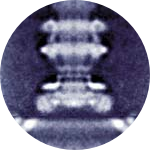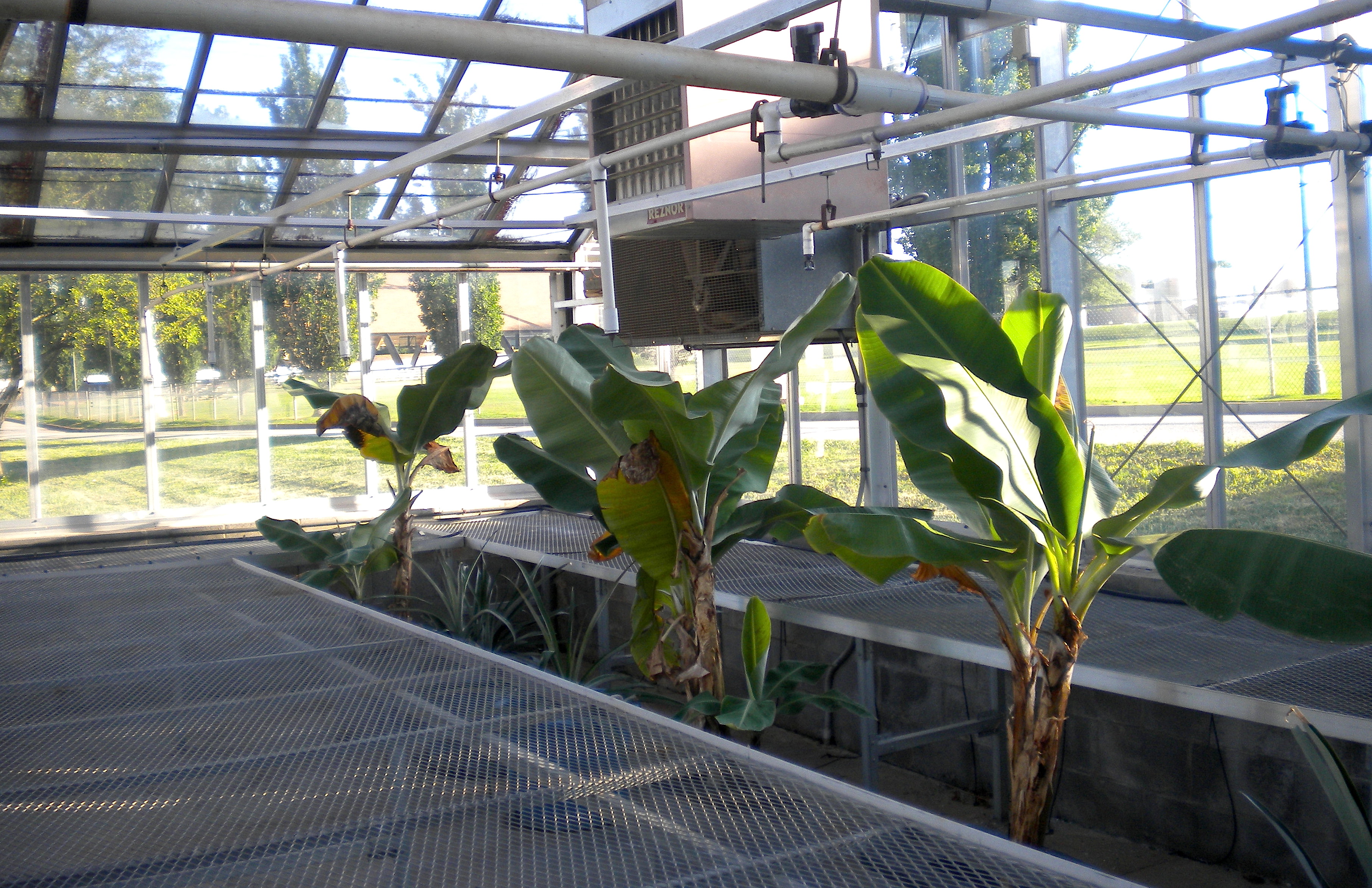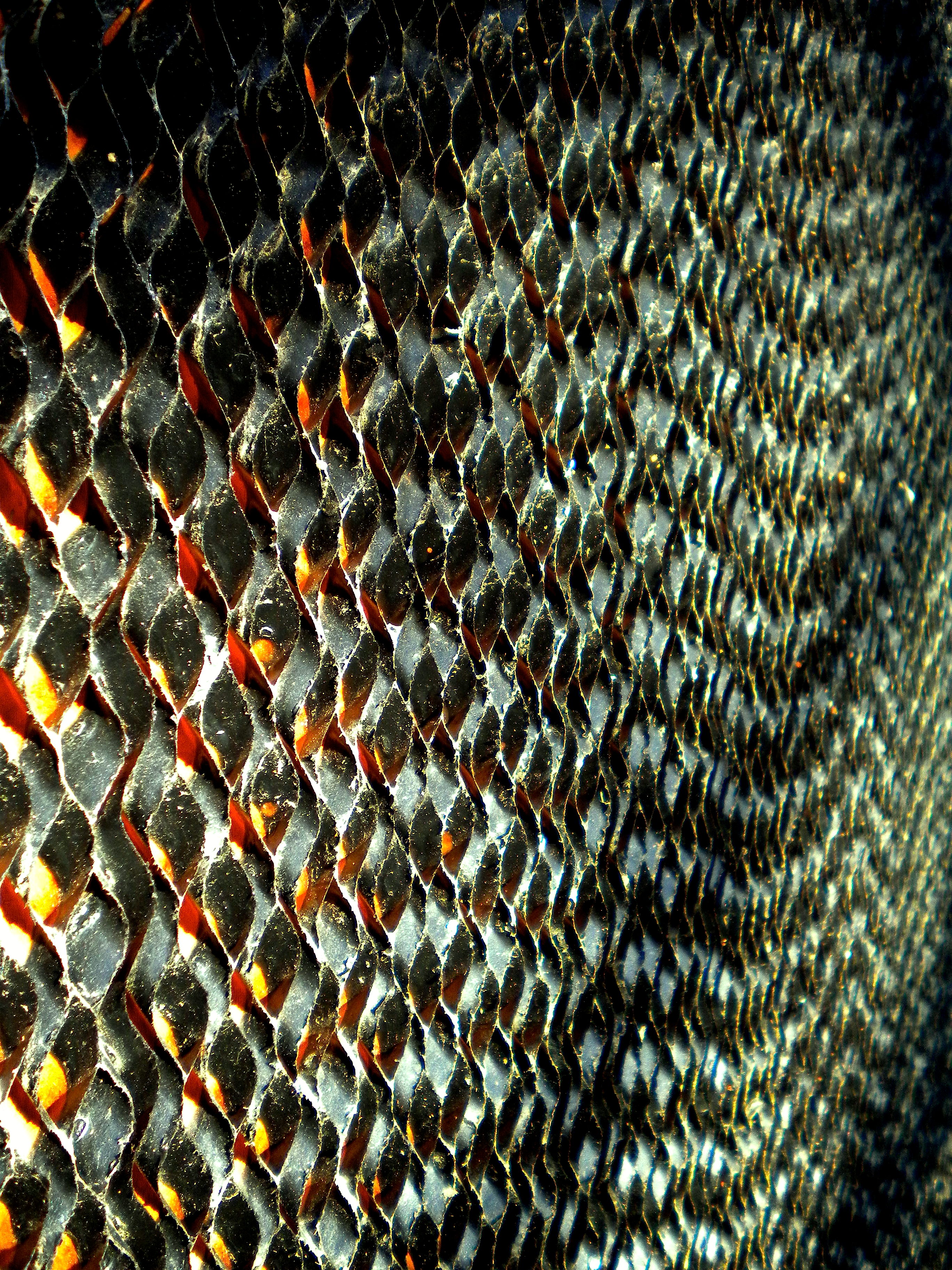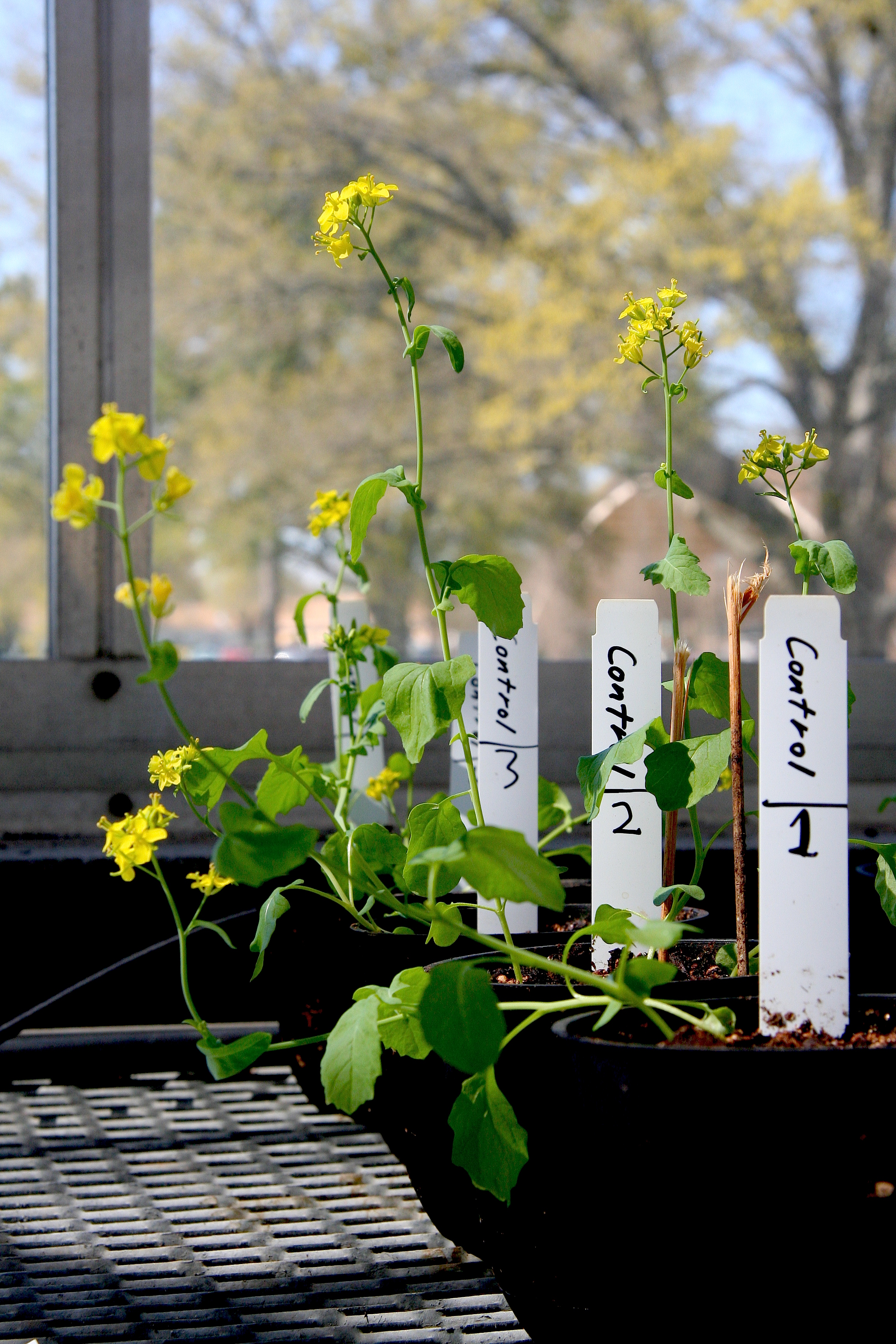About This Project
The global demand for food is rapidly growing, and one way to address the issue is by increasing crop production by improving the natural fertility of soils.
The loss of microbial biodiversity is a problem for the productivity of soils in agriculture, but the good news is that we can do something: we can protect, and even improve, soil fertility!
How? Simply by preserving and increasing the soil biodiversity, but in order to do so we really need to understand how microbial communities work.
Ask the Scientists
Join The DiscussionWhat is the context of this research?
We know a lot about the importance of microbial communities in natural environments. However, we know very little about the impact of microbial communities in agricultural soils. We know that microbes can promote growth by releasing nutrients, degrading toxic compounds, establishing positive interactions with plants, and producing antimicrobial active agents against pathogens.
We do not know how to manage soil microbial diversity to improve crop production. In this project we study the principles that regulate microbial communities and use our knowledge to improve natural soil fertility in a farm setting.
What is the significance of this project?
As stated by the Food and Agriculture Organization of the United Nations (FAO), biodiversity is essential for food security and nutrition. Thousands of interconnected species make up a vital web of biodiversity within the ecosystems upon which global food production depends. Achieving food security for all is intrinsically linked to the maintenance of biodiversity.
This project is important because it will give us a better understanding of living organisms in their native environment, which is critical to preserve biodiversity, and if this project is complete we will be also able to identify microbes to be used to improve soil quality, and ultimately improve agricultural practices.
What are the goals of the project?
We want to determine the minimum biodiversity level that supports soil fertility, and will do this by isolating 15 or more different microbes from the most fertile soils. Then we will use these to create microbial communities composed of 1, 3, and 9 different species. Each community will be used to inoculate a sample of sterilized soil. We hypothesize that the soils with the highest level of biodiversity would be the most fertile.
Secondly we will identify the specific plant-beneficial microbes, with the goal of studying in the future the exact mechanism they help plants. Third, we will develop a farming protocol that preserves specifically those microbes that have been shown to support fertility and plant growth. We also plan to publish so that other scientists and farmers can learn from our findings.
Budget
To complete this project we need reagents and equipment to isolate and study the microbes retrieved from soils. The reagents we need are media to select and identify fungi, bacteria, and actinomycetes on a species level.
We would also need funds to pay people who will work on the project, which will include up to 2 undergraduate students for a summer research internship.
The item "miscellaneous" includes in situ trips to collect soil samples directly from the fields, and we plan to visit 3 to 6 different locations in South Carolina.
At the end of the project we will have a meeting with the farmers who participated to the initiative to share our results, and we also plan to present a poster to regional scientific meetings.
Endorsed by
Meet the Team
Team Bio
Dr. Vincenzo Antignani graduated magna cum laude from the University of Naples "Federico II" (Italy) with a Bachelor of Science in Ethnobotany and Master of Science in Allelopathy and Plant Pathology. In 2009 he moved to Blacksburg, VA, where he worked as visiting Ph.D. student at Virginia Bioinformatics Institute (Virginia Tech). In January 2011 he completed his Ph.D. with a dissertation on "Trafficking of Virulence Factors in Plant and Human Cells". After completion of his Ph.D., he worked as a post-doctoral research assistant at Virginia Tech and at the University of Michigan focusing on RabGTPases-mediated plant immunity. Before joining the faculty at Bob Jones University, he served as an assistant lecturer, lab instructor and guest speaker in Italy and in the US. Dr. Antignani has published papers in various scientific journals covering topics in plant biology, plant pathology, fungal biology, plant ecology, soil ecology and biochemistry.
For most of his career Dr. Antignani worked as a researcher, and now he is appreciating the challenges of serving as a full time teaching professor at BJU, and enjoying the fellowship of new colleagues. A special part of this exciting experience is the interaction with students from all over the world. Indeed Dr. Antignani can often be found drinking coffee, taking a walk, sharing a meal, or playing table-tennis with students on campus.
Vincenzo Antignani
Dr. Vincenzo Antignani graduated magna cum laude from the University of Naples "Federico II" (Italy) with a Bachelor of Science in Ethnobotany and Master of Science in Allelopathy and Plant Pathology. In 2009 he moved to Blacksburg, VA, where he worked as visiting Ph.D. student at Virginia Bioinformatics Institute (Virginia Tech). In January 2011 he completed his Ph.D. with a dissertation on "Trafficking of Virulence Factors in Plant and Human Cells". After completion of his Ph.D., he worked as a post-doctoral research assistant at Virginia Tech and at the University of Michigan focusing on RabGTPases-mediated plant immunity. Before joining the faculty at Bob Jones University, he served as an assistant lecturer, lab instructor and guest speaker in Italy and in the US. Dr. Antignani has published papers in various scientific journals covering topics in plant biology, plant pathology, fungal biology, plant ecology, soil ecology and biochemistry.
For most of his career Dr. Antignani worked as a researcher, and now he is appreciating the challenges of serving as a full time teaching professor at BJU, and enjoying the fellowship of new colleagues. A special part of this exciting experience is the interaction with students from all over the world. Indeed Dr. Antignani can often be found taking a walk, sharing a meal, or playing table-tennis with students on campus.
Press and Media
The proposer is author of different scientific articles in applied and pure plant science. Here the list of publications including papers on soil fertility:
1.ANTIGNANI V., KLOCKO A., BAK G., CHANDRASEKARAN S., DUNVIN T., NIELSEN E., (2015). Recruitment of PLANT U-BOX13 and the PI4Kb1/b2 Phosphatidylinositol-4 Kinases by the Small GTPase RabA4B Plays Important Roles during Salicylic Acid-Mediated Plant Defense Signaling in Arabidopsis. THE PLANT CELL; The Plant Cell Preview, www.aspb.org 2015 American Society of Plant Biologists [IF= 10.656; citations: 0]
2.TYLER B., KALE S., WANG Q., TAO K., CLARL H., DREWS K., ANTIGNANI V., et al. (2013). Pathogen-independent entry of oomycete RxLR effectors and fungal RxLR-like effectors into plant and animal cells is specific and reproducible. MPMI; http://dx.doi.org/10.1094/MPMI-02-13-0051-IA [IF= 4.431; citations: 10]
3.LANZOTTI V., BARILE E., ANTIGNANI V., BONANOMI G., SCALA F., (2012). Antifungal saponins from bulbs of garlic, Allium sativum L. var. Voghiera. PHYTOCHEMISTRY, DOI: 10.1016/j.phytochem.2012.03.009. [IF= 3.351; citations: 12]
4.TYLER M., KALE S., ANTIGNANI V. et al. (2011). How PI-3-P mediates entry of oomycete, fungal and insect effectors into host cells. PLANT PATHOLOGY. [IF= 2.799; citations: 0]
5.BONANOMI G., INCERTI G., BARILE E., CAPODILUPO M., ANTIGNANI V., et al. (2011). Phytotoxicity, not nitrogen immobilization, explains plant litter inhibitory effects: evidence from solid-state (13)C NMR spectroscopy. NEW PHYTOLOGIST, DOI: 10.1111/j.1469-8137.2011.03765.x [IF= 6.645; citations: 23]
6.BONANOMI G., D'ASCOLI R., ANTIGNANI V., CAPODILUPO M., COZZOLINO L., MARZAIOLI R., PUOPOLO G., RUTIGLIANO F., SCELZA R., SCOTTI R., RAO M., ZOINA A. (2011). Assessing soil quality under intensive cultivation and tree orchards in Southern Italy. APPLIED SOIL ECOLOGY, DOI: 10.1016/j.apsoil.2010.12.007 [IF= 2.368; citations: 17]
7.BONANOMI G., ANTIGNANI V., BARILE E., LANZOTTI V., SCALA F. (2011). Decomposition of medicago sativa residues affects phytotoxicity, fungal growth and soilborne pathogens diseases. JOURNAL OF PLANT PATHOLOGY [IF= 0.912; citations: 4]
8.BONANOMI G., INCERTI G., ANTIGNANI V., CAPODILUPO M., MAZZOLENI S. (2010). Decomposition and nutrient dynamics in mixed litter of Mediterranean species. PLANT & SOIL, DOI 10.1007/s11104-009-0269-6 [IF= 2.773; citations: 28]
9.BONANOMI G., ANTIGNANI V., CAPODILUPO M.., SCALA F. (2010). Identifying the characteristics of organic soil amendments that suppress soilborne plant diseases. SOIL BIOLOGY & BIOCHEMISTRY, vol. 42; pp. 136-144 [IF= 3.242; citations: 53]
10.MOTTI R., ANTIGNANI V ., IDOLO M. (2009). Traditional Plant Use in the Phlegraean Fields Regional Park (Campania, Southern Italy). HUMAN ECOLOGY, vol/ 37, pp. 775-782, DOI 10.1007/s10745-009-9254-1 [IF= 1.402; citations: 16]
11.BONANOMI G., ANTIGNANI V., PANE C., SCALA F. (2008). Suppression of soilborne fungal diseases with organic amendments. JOURNAL OF PLANT PATHOLOGY, vol. 89; pp. 311-324, ISSN: 1125-4653 [IF= 0.974; citations: 62]
12.BARILE E., BONANOMI G., ANTIGNANI V., ZOLFAGHARI B., SAJJADI S. E., SCALA F., LANZOTTI V. (2007). Saponins from Allium minutiflorum with antifungal activity. PHYTOCHEMISTRY, vol. 68; pp. 596-603, ISSN: 0031-9422 [IF= 2.322; citations: 61]
13.ANTIGNANI V., GAMS W., MARZIANO F. (2007). Plectosporium delsorboi n. sp., a pathogen of Curcuma, Zingiberaceae. NOVA HEDWIGIA, vol. 86; pp. 209-214, ISSN: 0029-5035 [IF= 0.619; citations: 3]
Other
- TYLER B., KALE S., ANTIGNANI V. (2009). Methods and Compositions to Protect Plants and Animals against Pathogen Infection by Blocking Entry of Virulence Proteins. Patent application #: 12/944,345
Additional Information
Work day at the Greenhouse. Students from the Organismal Biology class working on a project dealing with plant development and nutrition.
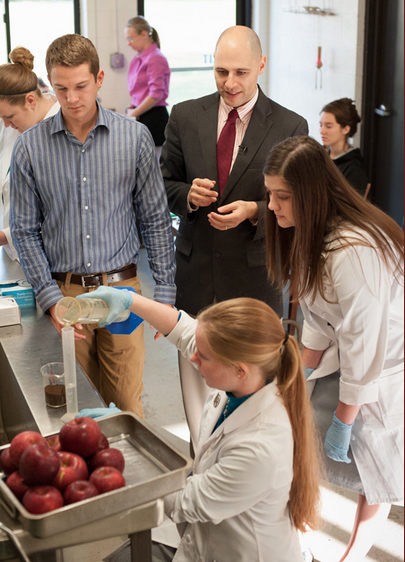
Part of our experiments will take place in a metal&glass greenhouse, this kind of structure is ideal for scientific studies.
Detail of the evaporative cooling system. Our greenhouse is equipped with a heating and an A/C system, which allow us to have a tight control on the environment where we run our experiments.
In the picture plants of Brassica rapa. In our experiments we want to determine the minimum biodiversity level that warranties soil fertility; we will do this by isolating different microbes from the most fertile soils, and by using them to arrange communities with a growing number of species. Each community will be then used to inoculate a sample of sterilized soil, in which we will then grow plants. If our hypothesis is correct, the soils with the highest level of biodiversity would be the most fertile. This experiment will help us to understand the effect of the loss of biodiversity on plant's growth.
Project Backers
- 17Backers
- 6%Funded
- $323Total Donations
- $17.24Average Donation




